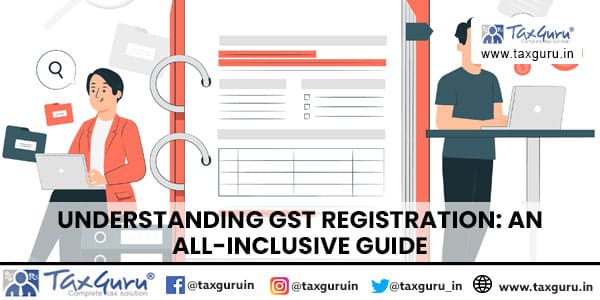How to read this article-:
This article is structured under following headings
Background-:Income under IT Act is taxed under various heads. There are several reasons for the same.
Why this article-:Purposive understanding of the heads of income for better understanding and interpretation.
The reason for this opening paragraph is to equip the reader to plan his order of reading. Invariably, it happens that, each of the reader is at different level of maturity and has different priorities at different times.
Rather than agreeing / dis-agreeing, it is more important to think and apply you mind on an issue.
This article is updated upto 12 December 2015.
Background-:
Everybody is aware that,
- the IT Act, taxes the income under various heads.
- There are specific provisions pertaining to each head.
- The provisions of each such head function under the scope defined in section 5 read with section 9.
One will be aware that, there are various concepts which act as a slide on the IT Act. It means though there is no specific mention of the same in the IT Act but still those exist and are enforceable. For example, the concept of
- Real income
- capital receipt
- Mutuality
Characteristics of IT Act
If you read the long title of the IT Act, it reads as “An Act to consolidate and amend the law relating to income-tax and super-tax”.
By its bare reading, the purpose of the Act is to levy and collect tax on Incomes and profits.
But there are many more purposes of the IT Act than to just levy and collect the taxes like
- To reduce inequality [ progressive tax rates, philanthropic deductions like u/s 80U, 80DD etc]
- To give effect to the social consensus of ethicality [lottery income, income from race horses is taxed at maximum marginal rate]
- To track the flow of money [AIR reporting]
- To dis-courage transactions in cash or otherwise than through banking institution [ ref sec 40A(3), 269SS, 269T, 69D]
- To channalise the investment [ various govt bonds like REC, NHAI]
- To discipline the indiciduals for savings [ various deductions u/s 80C]
- To promote a specific type of industry [ sec 80IB ] or for development of any geographic area [ deduction for north-eastern area, SEZ]. Recently, Govt reduced the rate for royalty u/s 115A to 15% making import of technology cheaper.
- To keep the resources mobile [ earlier wealth tax and income from house property]
Why This Article-:
One has to recognise existence of following things
- the objectives of IT Act
- Characteristics of the heads of income,
It will give a better insight to the reader while reading and interpreting the IT Act.
Various theories in force
Real income
It means that, what is chargeable to tax under the IT Act has to be real and actual income and not some hypothetical income. An example being a wrong / false entry in books of account can not give rise to chargeability of tax if such income does not exist.
It also means that, the person should be in actual charge of choice for application of that income.
Capital receipt
In simple terms, these are the sale proceeds of an asset or of those things which are not held for sale in ordinary course of business.
It also means sale of the source of income.
The cardinal rule of chargeability is that, such transaction has been specifically mentioned in the IT Act, section 2(24) to be more specific.
In past, the transaction of receipt for non competition agreement was not chargeable to tax. Even the judiciary has taken a consistent view that, to tax a capital receipt, a specific charging provision must be there in the law.
Thus if you peruse the section 2(24) it specifically includes the capital receipts like gift, subsidy etc. Some examples are re-produced in the Appendix
Mutuality
Take a simple example. A few friends come together and plan a trip. They collect some amount and spend it. Whether the residual is chargeable to tax ? The answer is no. In case of a co operative society, the same principle is applicable.
Refer section 80P which was introduced specifically to bring this residual to taxation.
CHAPTER IV – COMPUTATION OF TOTAL INCOME –
Heads of income
14. Save as otherwise provided by this Act, all income shall, for the purposes of charge of income-tax and computation of total income, be classified under the following heads of income :—
| A. | —Salaries. | |
| B. | —Income from house property. | |
| C. | —Profits and gains of business or profession. | |
| D. | —Capital gains. | |
| E. | —Income from other sources. |
–
| Particulars | Salary | House property | Business | Capital gain | Other sources |
| Whether active / passive income | active | passive | active | passive | Passive |
| Whether source of income is lost | No | No | No | Yes | No |
| Whether real income theory will have impact | No | No | Yes | Yes*[1] | Yes*[2] |
| How capital receipt is taxed | No | No | No | Yes | No |
Where real income theory will not have any impact
[1] – section 50C creates a deemed fiction of amount of consideration.
[2] – deemed dividend
Substance vis-à-vis specific provisions of Act
There is are specific provisions like transfer of capital asset is chargeable under the head capital gain or dividend and interest is chargeable to tax under the head Other sources.
In spite of above, there are precedents from judicial law that, on facts,
- if trading in securities amounts to business, it will be chargeable to tax under the head business income.
- a person enganged in the business of investing, the interest and dividend income will be chargeable to tax under business income.
| Head | Triggering point for recognition of income in case of each type |
| Salary | when the services are rendered to the employer |
| House property | When the house property gets completed. |
| Capital gain | Where the gain ARISES |
| Profit from business | Depending upon the method of accounting followed. Income has to fall due. / receipt basis. Income accrued but not due is not chargeable to tax. MAT is exception. |
| Other sources | Once it falls due / actual receipt depending upon method of accounting followed. |
A. —Salaries.
Thus salary is chargeable to tax on accrual or receipt whichever is earlier. Currently, it has posed a practical problem in case of employees of Kingfisher because the salary has not been paid. Techically speaking, the charge of income tax is still there.
Thus some presumptive deductions like transport allowance, exempting personal use of mobile / internet charges are there.
To apply the theory of real income, I think, one will have to apply to high court by way of a WRIT.
B. —Income from house property.
The meter of income starts the moment the property reaches completion. In old days, even the value of self occupied property was chargeable to tax and the same was upheld by Supreme court in the case of Refer Bhagwandas Jain vs Union of India – One can readily find the case at http://indiankanoon.org/doc/198371/
The issue was, if I am staying in my own house, how there can be income?] . Its constitutional validity was upheld by the SC. To mitigate this hardship, from A Y 93-94, sec 23(2) was amended and the statute gives the annual value of SOP at NIL.
Yes. It appears shocking but is true.
The real income theory does not have any say over here except for the questions like ownership of property.
If one refers the deductions available, it is 30% standard deduction, interest on loan, vacancy allowance and municipal taxes
C. —Profits and gains of business or profession.
Real income theory is very much applicable.
There are some presumptive dis-allowances like
- Expenses for which there is Non / short payment of TDS
- Payment of statutory dues u/s 43B
D. —Capital gains.
Here it is necessary to re-produce the first portion of section 45. This section is charging section for capital gain i.e. determining the scope / ambit of taxation.
45. (1) Any profits or gains arising from the transfer of a capital asseteffected in the previous year shall, save as otherwise provided in sections…….., be chargeable to income-tax under the head “Capital gains”, and shall be deemed to be the income of the previous year in which the transfer took place.
The conditions for taxation are cumulative.
- There should be a transfer
- It should be of a capital asset
- Any profit / gain shoud ARISE.
- All such transfer will be DEEMED.
To qualify for arise, it means something more than accrue. There must be some fructification of the right acquired culminating into accrual.
The real income theory has less applicability under this head. Refer section 50C whereby the market value as per local stamp Act will be taken as value of consideration evenif not actually received.
E. —Income from other sources.
It comprises of two parts
- First being any income which is normally say a revenue receipt and is income in normal course of understaning.
- Second being any income / receipt which the legislature wants to tax under this head.
The finance [No. 2] Act, 2004 has brough to tax gift under this section.
The real income theory has limited application here. Consider following clause of the section 56(2)
[(xvi) any consideration received for issue of shares as exceeds the fair market value of the shares referred to in clause (viib) of sub-section (2) of section 56;]
( Author CA. Yogesh S. Limaye can be reached at yogesh@salcoca.com)



















